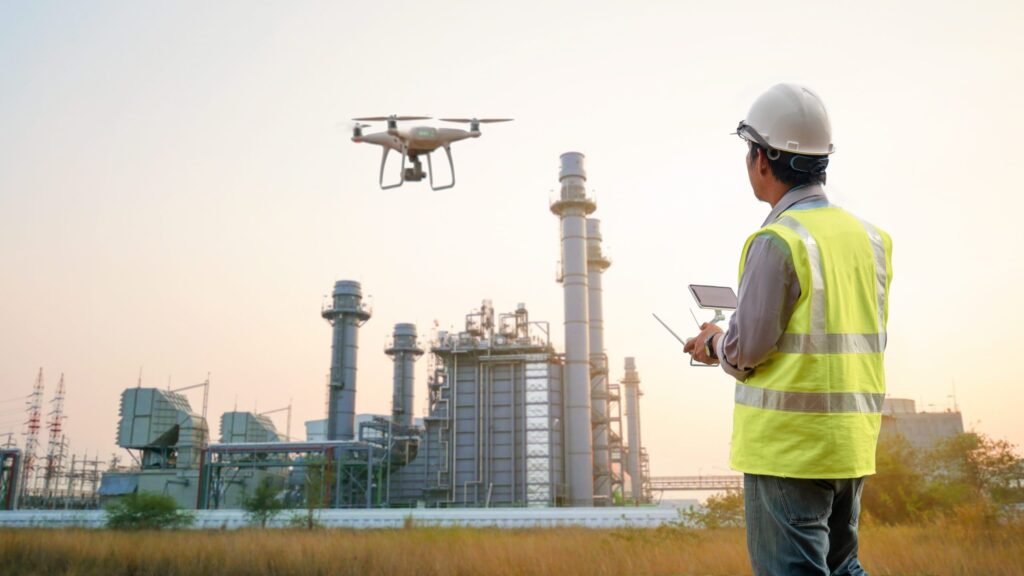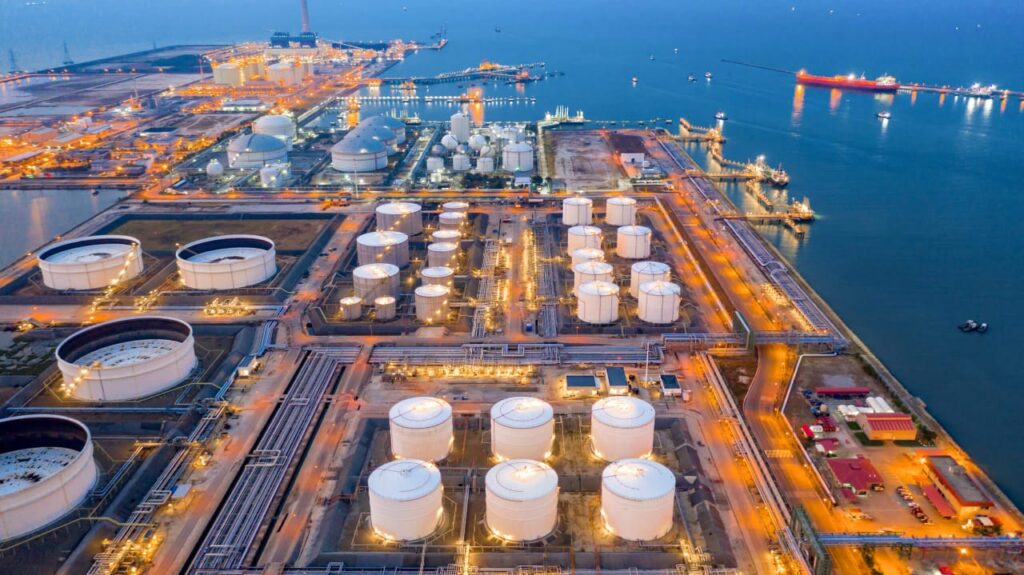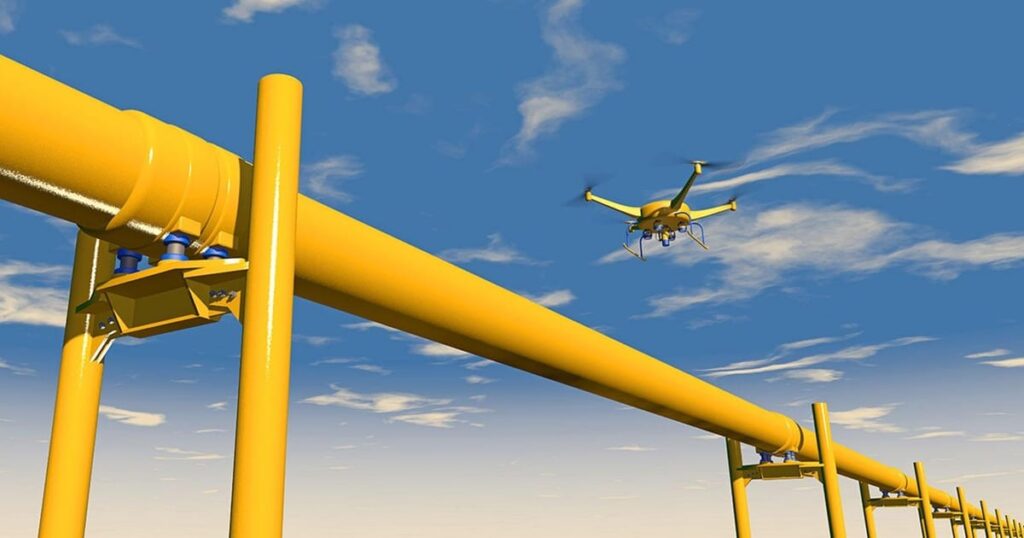Introduction
The oil and gas industry constantly seeks innovative solutions to enhance safety and operational efficiency. Traditional inspection methods, such as manned helicopters and scaffolding, often pose risks to workers and incur high costs. In recent years, drone technology has emerged as a powerful tool for transforming inspection processes. Drones not only improve safety but also streamline operations, making inspections faster and more efficient. This article explores the advantages of drone-based inspections in the oil and gas sector and highlights best practices for successful implementation.
The Critical Role of Inspections
Inspections are essential in the oil and gas industry for several reasons. First, they help companies maintain regulatory compliance. Second, regular inspections prevent costly downtimes by identifying potential issues early. Lastly, they enhance safety by reducing the risks associated with manual inspections. However, traditional methods can expose workers to hazardous environments and consume valuable time and resources.

Benefits of Drone-Based Inspections
1. Improved Safety
One of the primary advantages of drone technology is enhanced safety. By using drones, companies can inspect hard-to-reach areas without putting personnel at risk. For example, drones can access offshore platforms, tall flare stacks, and remote pipelines, minimizing the need for workers to operate in dangerous conditions. Consequently, this proactive approach fosters a culture of safety and significantly reduces workplace accidents.
2. Cost Efficiency
Drone inspections lead to significant cost savings. Traditional inspection methods often require extensive manpower and expensive equipment. In contrast, drones can conduct inspections rapidly, covering vast areas in a fraction of the time. This efficiency reduces labor costs and minimizes equipment expenses. Additionally, organizations can allocate their resources more effectively, allowing for better overall financial management.
3. Rapid Data Collection and Analysis
Drones equipped with advanced cameras and sensors enable quick and efficient data collection. These UAVs can capture high-resolution images and gather thermal data in real-time. This rapid data acquisition allows teams to analyze findings immediately, leading to faster decision-making. As a result, companies can address potential issues before they escalate, ensuring operational continuity.
4. Comprehensive Coverage
Drones excel at providing comprehensive inspections. Unlike traditional methods, drones can navigate challenging terrains and inspect extensive infrastructure without limitations. They can easily capture images from multiple angles and heights, providing a thorough assessment of equipment and structures. This capability ensures that companies receive detailed insights into the condition of their assets.
5. Environmental Monitoring
As environmental concerns rise, the oil and gas industry faces increased scrutiny. Drones can assist in monitoring environmental impacts by detecting leaks, assessing emissions, and evaluating vegetation health. By using UAVs for environmental monitoring, companies demonstrate their commitment to sustainability while ensuring compliance with regulations. This proactive approach not only protects the environment but also enhances corporate reputation.
6. Efficient Documentation
Drones streamline the documentation process. High-resolution images and videos captured during inspections serve as valuable records for future reference. This thorough documentation allows companies to track changes over time and facilitates compliance during regulatory audits. Additionally, having organized records enhances operational transparency and accountability.

Case Studies: Successful Implementation
Case Study 1: Offshore Oil Platforms
A leading oil company implemented drone inspections for its offshore platforms. By utilizing drones equipped with thermal imaging cameras, the company detected heat anomalies that indicated equipment malfunctions. This proactive monitoring allowed for timely interventions, preventing costly downtimes and enhancing overall operational safety. The results demonstrated that drone inspections could improve both safety and efficiency.
Case Study 2: Pipeline Monitoring
Another major player in the industry adopted drone technology for pipeline inspections. By conducting regular aerial surveys, the company identified potential leaks and erosion that traditional inspections might have missed. This enhanced monitoring capability not only improved pipeline integrity but also reduced the risk of environmental contamination. Ultimately, this case highlights the effectiveness of drone inspections in maintaining safety and efficiency.
Best Practices for Implementing Drone Technology
To maximize the benefits of drone-based inspections, companies should consider the following best practices:
- Select the Right Equipment: Invest in high-quality drones equipped with the necessary sensors for specific inspection needs, such as thermal imaging or LiDAR.
- Train Operators: Ensure that drone operators receive comprehensive training and certification. This training should encompass safety protocols and compliance with local regulations.
- Integrate with Existing Systems: Incorporate drone data into existing asset management systems for seamless data analysis and reporting.
- Establish Regular Inspection Schedules: Develop a routine inspection schedule using drones to ensure continuous monitoring and maintenance.
- Engage with Regulatory Authorities: Stay updated on local regulations governing drone operations in the oil and gas industry to ensure compliance.

Future Trends in Drone Technology
As drone technology continues to evolve, the oil and gas industry can expect several advancements:
- Artificial Intelligence Integration: AI-powered drones will analyze data in real-time, identifying anomalies with greater accuracy and efficiency.
- Automated Flight Paths: Future drones may feature automated flight paths for routine inspections, further reducing the need for manual intervention.
- Advanced Data Analytics: Enhanced analytics tools will enable companies to gain deeper insights from drone-collected data, improving decision-making processes.
Conclusion
Drone-based inspections are transforming the oil and gas industry by enhancing safety, reducing costs, and promoting environmental responsibility. As companies increasingly adopt these technologies, they not only comply with stringent regulations but also contribute to a sustainable future. Integrating drones into inspection processes has become essential for organizations aiming to ensure safety and efficiency while minimizing their environmental footprint.
In summary, embracing drone technology positions oil and gas companies to thrive in a competitive landscape. By prioritizing safety, operational efficiency, and environmental stewardship, the industry can pave the way for a brighter, more sustainable future.
